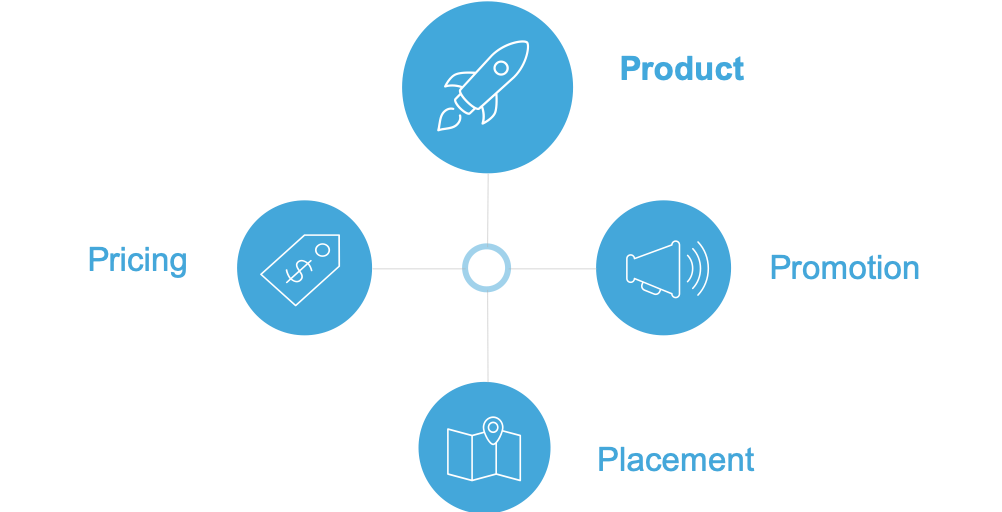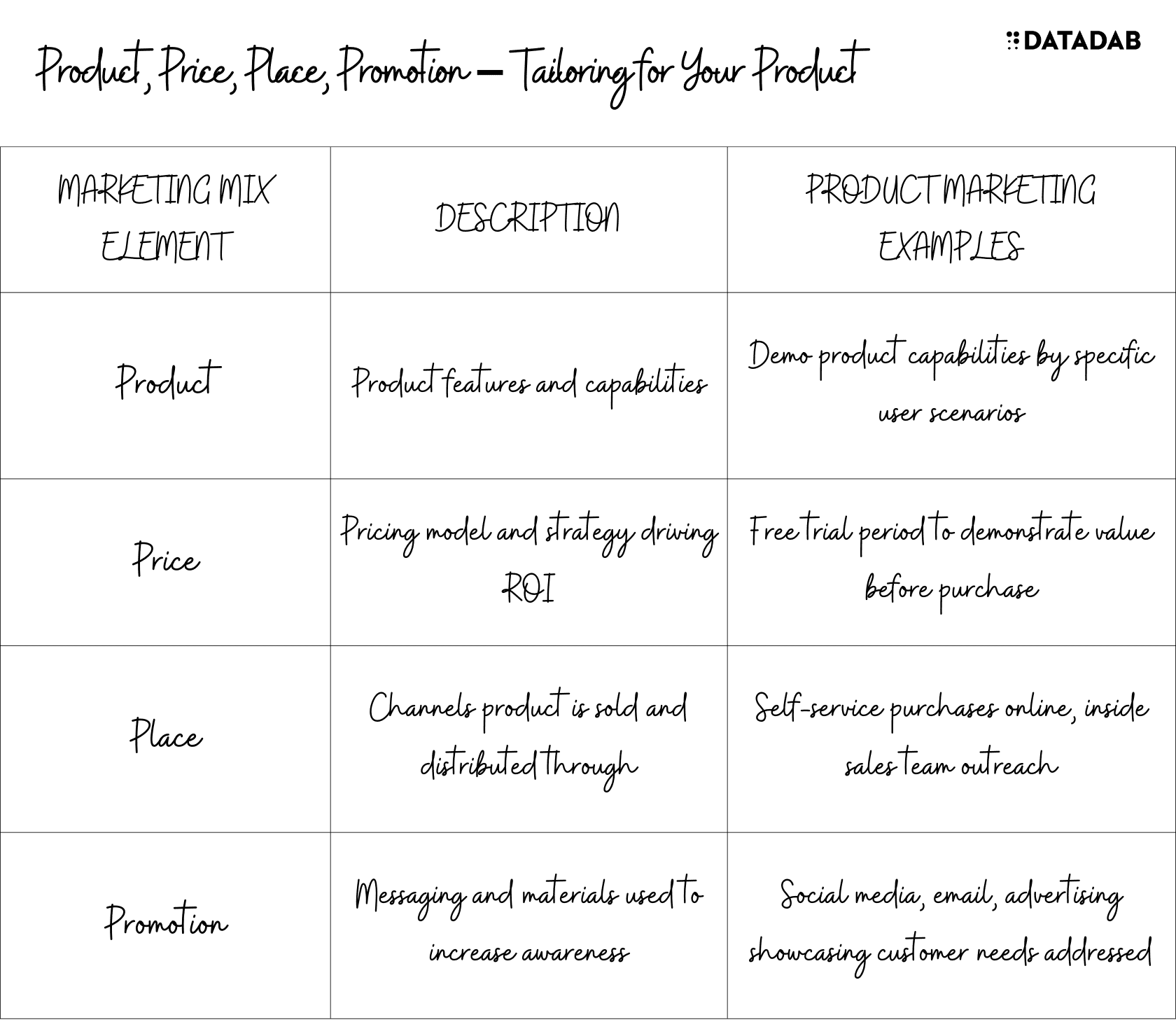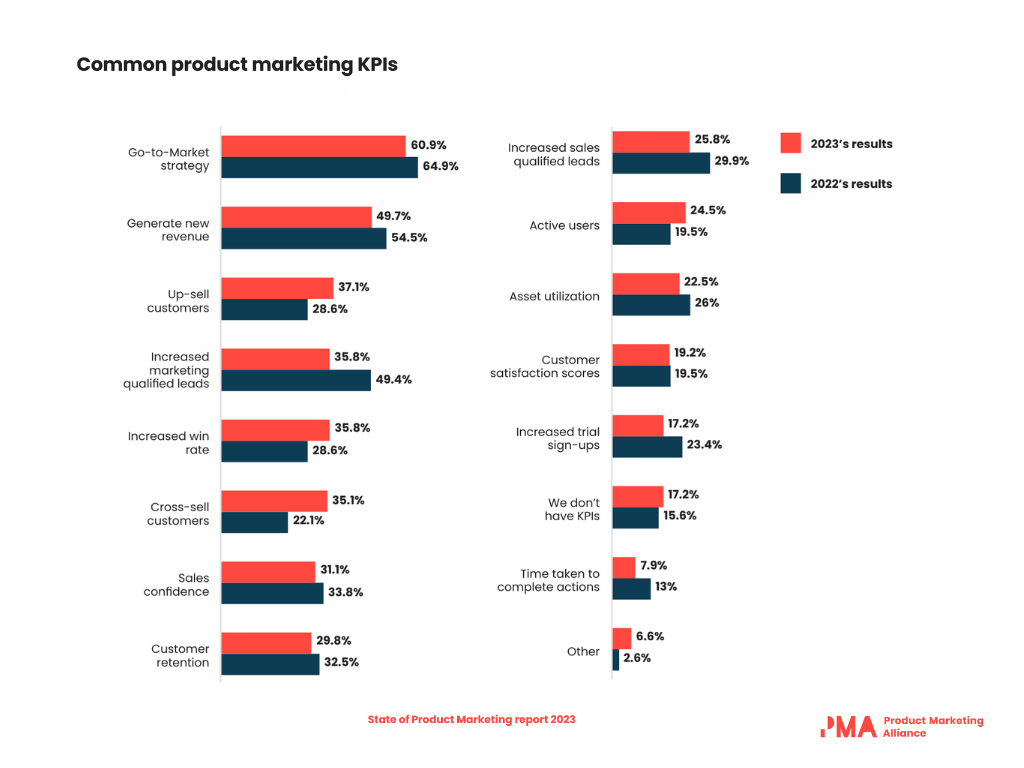“If you are not embarrassed by the first version of your product, you’ve launched too late.”
- Reid Hoffman, LinkedIn Co-Founder
I still remember the rush of excitement when my team first launched our app after months of hard work. We were thrilled to finally unveil what we’d crafted to the world and get it into customers' hands. However, in our zeal around product development, we’d severely underestimated the critical role effective marketing plays in bringing an app to life. We quickly realized that even the most innovative product risks floundering without deliberate, strategic promotion tailored to customer needs.
After stumbling out the gates, we rapidly regrouped on messaging and go-to-market plans. We realigned activities to deeply connect with our target users first and foremost. This outside-in perspective and customer empathy transformed not just our promotion but the overall product too. Years later, the app continues to thrive thanks to the customer-centric growth framework we developed.
Now having been on both sides, I cannot overstate the marketing lesson that hit home for me. Your product marketing is just as integral to success as the product itself. They must evolve together, each constantly informing the other. Skimping on one distorts the full picture. If you want customers to fall in love with your product, you have to fully understand their hopes, dreams and pain points first. This blueprint shares the key ingredients my team and I used to find product-market fit, drive adoption and continually refine based on what customers value most. I offer it hoping the framework propels your product ambitions as well!

Laying the Foundation: Understanding Your Product and Market
Market Research and Competitive Analysis
Conducting thorough market research and competitive analysis puts the customer front and center when strategizing. It entails gathering insight into customer demographics, pain points, behaviors, and the competitive landscape to inform your product messaging and positioning.
- Customer research: Surveys, interviews, focus groups to understand your target users' characteristics, motivations, problems they aim to solve.
- Market analysis: Research to size your market opportunity, growth potential, trends influencing customer needs.
- Competitor analysis: Evaluations of competing and alternative solutions customers presently use. Analyze their messaging, positioning, product/service offerings, and market performance.
Performing this diligence early clarifies your customers' needs and how to best convey your product's value.
Identifying Your Target Audience and Their Needs
With market research conducted, define your target customer segments to focus your product marketing efforts. Group customers with common characteristics and needs into buyer personas. Outline relevant details like demographics, behaviors, motivations, and pain points your product solves.
Filtering your market into specific personas narrows your focus to deeply understand your products value from the customer's perspective. More specific personas make messages more compelling.
Building Your Product Marketing Strategy
Setting Clear Objectives and Goals
Now with a firm grasp on your target customers, set clear objectives and goals for your product marketing initiatives. Outcomes can include:
- Increase product adoption or usage by [XX]% among customer group(s)
- Achieve [X,XXX] new product purchases from customer group(s) after [X] months
- Reach [XXX] prospects with messaging about key differentiating features
- Achieve [X]% month-over-month growth in conversion rate
Setting quantitative goals and metrics of success gives focus to your marketing execution. It also enables accurately measuring your progress.
Developing Key Messaging and Positioning
With clear goals defined, craft messaging that resonates with your customers' needs and wants. Succinctly convey your value proposition answering - "why should the customer care?"
Build positioning around the key differentiators and benefits versus alternatives. For example:
- Easier, faster, or cheaper than current solutions customers use
- New or improved capabilities compared to the status quo
- More customizable, intuitive experience benefiting the customer
Taking this customer-centric approach earns relevance and adoption.

Crafting Your Marketing Mix: The 4 Ps in Product Marketing
Balancing the marketing mix elements uniquely for product success is an art and science.
Product, Price, Place, Promotion – Tailoring for Your Product

Customizing these elements for your product and buyers plays a major role in adoption.
Launch Strategies: Making a Big Impact
Planning for a Successful Product Launch
How you introduce your product makes a first impression on customers. An orchestrated launch plan generates buzz, momentum and drives trial and usage.
- Pre-launch: Blog posts and guides detail customer problems solved. Newsletter signups and teasers build interest. Limited private betas invite select users to test drive.
- Launch: Concentrated PR blitz. Update website and messaging highlighting product value. Advertise launch deals and promotions to incentivize first purchases.
- Post-launch: Rapid response to initial user feedback. Double down on areas generating traction. Use momentum for referrals and case studies.
Careful launch planning seize opportunities to convey your purpose to the customers needing it most.

Case Studies: Memorable Product Launches
- Dropbox's viral loop at launch drove signups and growth by rewarding referrals with extra storage space. This incentivized customers to rally others.
- Slack delivered a polished, exceptional user experience out the gates. Positive word spread fast, pulling in over 8,000 pilot users in just 4 months pre-launch.
- Zoom invited users to free meetings and webinars to demonstrate capabilities firsthand during COVID. Seeing value directly, many converted to paid plans.
Leveraging proven go-to-market strategies at launch compounds growth.
Measuring and Adapting: The Key to Long-Term Success
Setting KPIs and Monitoring Performance
The most successful product marketing plans measure outcomes quantitatively to gauge effectiveness. Establish key performance indicators (KPIs) aligning to your objectives for consistent tracking. Common examples:
- Sales or adoption rate
- Churn or attrition rate
- Customer lifetime value
- Cost Per Acquisition
Monitoring quantitative KPIs enables understanding what's working well and what messaging resonates most.

Adapting Strategies Based on Feedback and Results
The best product marketers stay nimble. Using feedback loops, refine strategies and optimize spend towards highest performing initiatives.
- Customer research reveals new opportunities
- Competitor offerings shift dynamics
- New platforms/channels emerge for outreach
Continually testing and iterating ensures marketing remains relevant despite evolving landscapes. Laser focus on the metrics that matter most.
Conclusion: Continuous Improvement in Product Marketing
In closing, delivering truly great products is incomplete without equally great product marketing to match. Planning and executing a winning product marketing strategy calls on cross-functional collaboration between teams. It demands maintaining an outside-in, customer-focused mindset continually. With the blueprint above combined with vigilance, creativity and a passion for problem solving, product marketing success can seem almost inevitable. And getting there is often the most rewarding part.
FAQ
What are some key components of a successful product marketing strategy?
An effective product marketing strategy always starts with thoroughly understanding your target customers. Conducting market research through means such as interviews, surveys, and focus groups uncovers the characteristics, needs and pain points of potential buyer personas. Aligning messaging and positioning directly to the problems your product solves for them is vital.
Defining quantitative goals also brings critical focus, whether adoption rates, conversions, or growth metrics. Funneling efforts towards moves the needle on clearly defined objectives. Carefully planning marketing mixes and launch strategies rounds out a plan, but staying nimble to adapt based on performance and continuous feedback is what enables refining over time.
What should I include in my competitive analysis when designing a new product marketing strategy?
Conducting thorough competitive analysis provides tremendous insight to differentiate. Compare both direct competitors offering similar solutions, but also alternative products or manual processes customers currently use. For each, analyze factors like:
- Product features and capabilities to identify where competitive solutions fall short or your product holds advantages. Look at gaps where additional needs may exist.
- Market share and growth trajectories over the past 1-3 years. Which see accelerating adoption? Where is momentum slowing?
- Target customers and positioning messaging. Do competitors focus broadly or specific niches? How do they convey product value?
- Pricing model and business model differences. One competitor may focus enterprise while you target SMB space.
- Reviews, ratings or social sentiment for each product. This reveals shortcomings like poor support customers commonly complain about.
Evaluating across these dimensions for competitor and alternatives helps craft messaging tailored to displace them. Monitor competitor activity to rapidly respond to any shifts with agility.
If I don't have experience in product marketing, where should I start in building out my skills?
The fundamentals of classic marketing translate strongly to skills in product marketing. Start by reading books and blogs from thought leaders. Attend seminars or online courses focused specifically on modern, technology-enable products. Over time, aim to sharpen skills including:
- Becoming an expert in deeply understanding your customers and markets
- Data-driven decision making using metrics and analytics
- Copywriting and content production resonating with technical buyers
- Advertising via paid channels like social media or Google Ads
- Leveraging sales enablement tools like CRMs in harmony
While much can be learned independently, look for a mentor or experienced product marketer who can provide guidance. Volunteer for projects, shadow roles across teams, take on initial strategies to apply learnings. Over 2-3 years a junior hire can gain competency with the right experiences.
What are the most important metrics to track the performance of my product marketing initiatives?
Focusing on a targeted set of key quantifiable metrics aligns teams and keeps efforts on track towards strategic goals. Leading indicators to consider tracking include:
- Number of sales qualified leads (SQLs) the marketing team generates and hands off
- Marketing spend required to acquire each new customer
- Funnel conversion rates from prospects exposed to leads to customers
- Churn rate and customer lifetime value as indicators of retention efforts
- Web traffic, engagement, and conversions from content production
Set goals for each metric and rigorously measure against them. When leveraged effectively, analytics tools like Google Analytics, Mixpanel, Tableau, and others analyze performance data to continually optimize.
How should my product marketing strategy evolve post-product launch vs. the initial launch period?
The initial launch demands garnering attention and interest to drive those critical first trials and purchases. Post-launch shifts towards nurturing loyalty and growth. Some areas to adapt:
- Continue releasing updates showcasing expanded product capabilities for existing user base
- Double down on community building efforts through forums, social channels, events
- Prioritize content and tools enabling customer self-service and troubleshooting
- Develop referral and affiliate initiatives incentivizing bottom-up word-of-mouth
- Expand market reach by localizing product for international regions
- Hyper focus on highest LTV customer verticals or niches demonstrating traction
The most successful product marketers avoid complacency, continually A/B testing and optimizing launch strategies towards areas product/market fit shows greatest promise.
What are some leading indicators my product marketing may be missing the mark with customers?
Several data points can act as early warning signs that messaging or positioning may be falling flat with customers. Watch for:
- Website visitors spending little time before bouncing from key pages
- Low open or click-through rates from email campaigns
- Minimal social engagement, comments, and sharing on owned channels
- Poor scores on brand awareness or value perception surveys
- Declining organic search traffic to core product pages
- High turnover rates from free trial users not converting
- Lack of net new customer expansion from within existing accounts
Proactively monitoring for stagnating performance enables rapidly testing improvements before churn and downgrades grow.
How should my company stage introducing a brand new product line to the market?
Orchestrating a strategic sequence across pre-launch, launch, and post-launch allows capitalizing on each phase.
- Pre-launch - Focus on conveying the problem set your product solves not how it works. Offer a signup page for early access without details. Generate FOMO through teaser social posts, industry publications,ulating demand.
- Launch - Host a launch event or webinar demoing product capabilities. Shift messaging to articulate unique value prop and differentiators. Incentivize Action via time-bound discounts or promo offers for the first X customers.
- Post-launch - Onboard users with tailored content guiding product adoption. Spotlight early customer wins through case studies. Lean on influencers or bloggers to organically reinforce credibility.
Follow this structured playbook to maximize impact of bringing an innovative product to market. Adapt efforts based on metrics indicating fastest traction channels.
What should I expect for the product marketing budget needed?
Product marketing budgets often range from 10-30% of company revenue dependent on stage. Early stage may warrant at minimum 15% to fuel getting brand recognition and acquisition engines spinning. As product/market fit is proven, budgets could skew closer to 10% fueled more by word-of-mouth and momentum.
Since many activities are scalable - like website pages or content creation - ratios often decline as company scales. But the most successful product marketers maintain healthy spend safeguarding against disruptions stalling hard-fought progress.
Analyze efficiency by tracking key metrics like cost per acquisition monthly. Benchmarks also help gauge reasonable budget levels by company stage and revenue.
Who should I involve for input when designing a product marketing strategy?
Given the customer focused nature of product marketing, cross-functional collaboration brings immense value.
- Product Managers - Translate market analysis into product requirements and positioning
- Engineers - Provide technical guidance on product capabilities to convey
- Sales - Supply customer questions to address and competitive intelligence
- Customer Success - Share common objections and friction points prospects hit
- Executive Leadership - Set company vision and imperatives for marketing to align to
Regular meetings with these groups will strengthen contextual insights translation into resonating messaging. Additionally, gather direct customer input through roundtable discussions or advisory boards.






